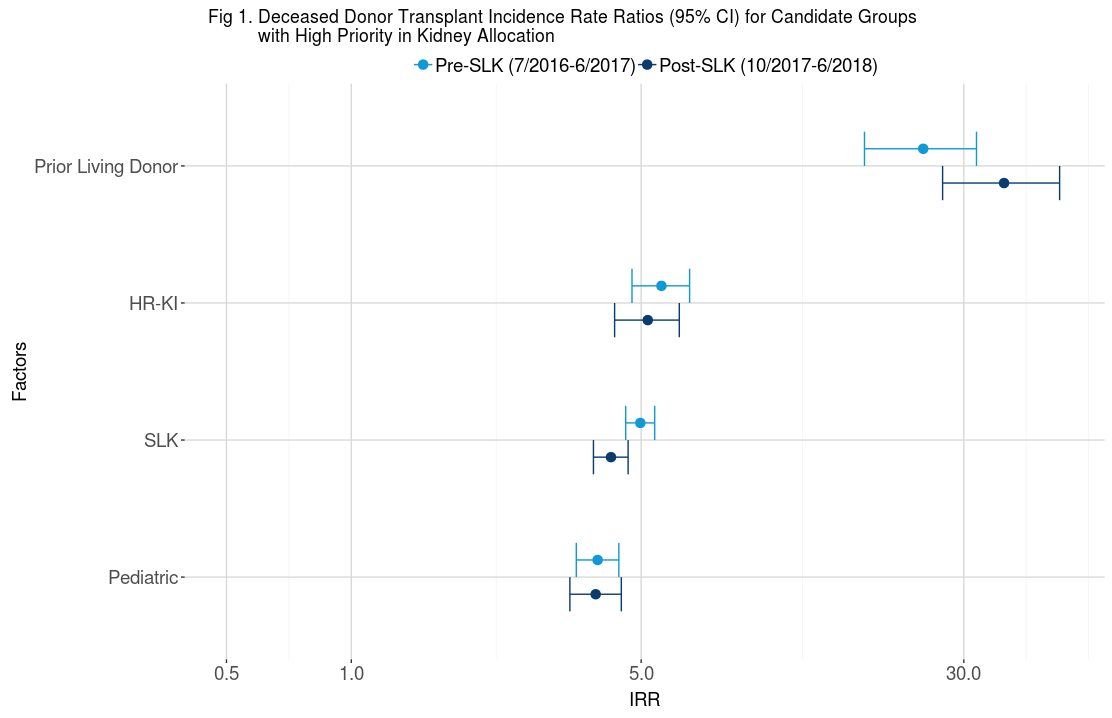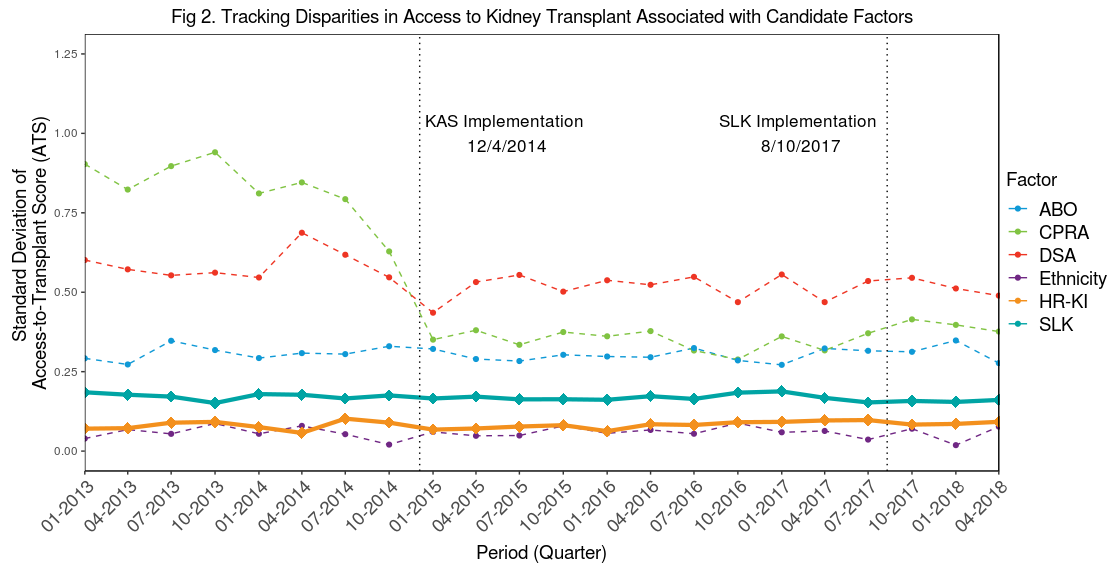Measuring and Monitoring Disparities in Access to Kidney Transplantation Associated with Being Listed for a Multi-Organ Transplant (MOT)
UNOS, Richmond, VA
Meeting: 2019 American Transplant Congress
Abstract number: 212
Keywords: Allocation, Ethics, Kidney transplantation, Multivisceral transplantation
Session Information
Session Name: Concurrent Session: Kidney Deceased Donor Allocation II
Session Type: Concurrent Session
Date: Monday, June 3, 2019
Session Time: 2:30pm-4:00pm
 Presentation Time: 2:42pm-2:54pm
Presentation Time: 2:42pm-2:54pm
Location: Ballroom B
*Purpose: In 2018, the OPTN published a new methodology for measuring and monitoring disparities in access to deceased donor kidney (KI) transplantation (Tx) among kidney-alone candidates. Since OPTN policy prescribes that the kidney “follows the life-saving organ (e.g., liver, heart),” we extended the methodology to quantify and track the access advantage afforded KI candidates also listed for a liver (SLK) or heart (HR-KI), in light of the recent policy change requiring evidence of renal insufficiency for SLK Tx.
*Methods: Poisson rate regression with 17 candidate covariates was applied to 22 quarterly, period-prevalent cohorts (1/1/13-6/3/18) of active KI waiting list (WL) registrations including SLK and HR-KI, using OPTN data. Factor-specific disparities were quantified as the standard deviation (SD) of log(Tx rate) among registrations, holding other factors constant. To compare relative advantages, we calculated deceased KI Tx incidence rate ratios (IRR) for groups of candidates who receive high priority in KI allocation.
*Results: Pre-SLK policy change IRRs of 4.97 and 5.60 for SLK and HR-KI suggest MOT kidney candidates have a ~5-fold advantage in access to Tx compared to KI-alone adult candidates, akin to the pediatric advantage, but not as high as for prior living donors (IRR=23.95). The SLK IRR declined slightly to 4.22 post policy change (Fig 1).
Despite the high IRRs for MOT, Fig 2 reveals that compared to other factors such as Donor Service Area (DSA), sensitization level (CPRA), and blood type (ABO), population-weighted disparities associated with MOT are relatively small, likely since they represent only 1.2% (SLK) and 0.3% (HR-KI) of the active KI WL, and have remained largely unchanged under the new policy.
*Conclusions: MOT KI candidates receive an approximately 5-fold advantage in access to KI Tx compared to an average KI-alone candidate, but not as great as some highly prioritized KI-alone candidates (e.g., prior living donors). The slight decline in SLK IRR is consistent with the modest decline in the number of post-policy SLK Tx. Population-weighted disparities associated with SLK and HR-KI are relatively small, primarily since MOT represent a small % of the WL, and have not changed appreciably post-SLK policy.
To cite this abstract in AMA style:
Stewart DE, Custer CA, Robinson AM, Wilk AR. Measuring and Monitoring Disparities in Access to Kidney Transplantation Associated with Being Listed for a Multi-Organ Transplant (MOT) [abstract]. Am J Transplant. 2019; 19 (suppl 3). https://atcmeetingabstracts.com/abstract/measuring-and-monitoring-disparities-in-access-to-kidney-transplantation-associated-with-being-listed-for-a-multi-organ-transplant-mot/. Accessed December 28, 2025.« Back to 2019 American Transplant Congress


